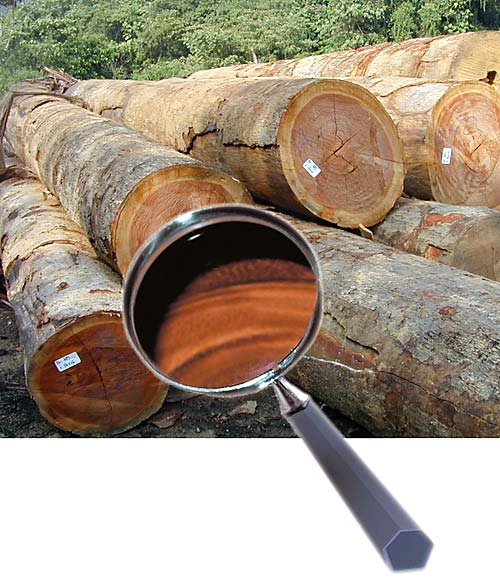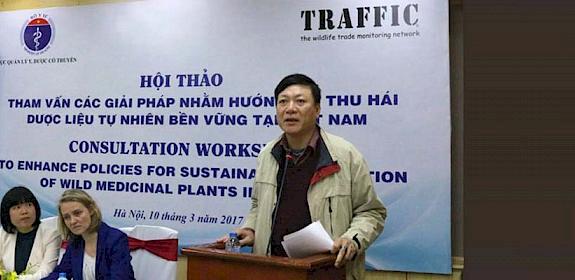Experts can tell the wood from the trees
Cambridge, UK, 23rd November 2010—Methods to verify the geographic origin of timber in trade were discussed earlier this month at a two-day conference in Eschborn, Germany.

The conference on Genetic and isotopic fingerprinting techniques—practical tools to verify the declared origin of wood was organized by the German Technical Development Co-operation (GTZ) and WWF Germany.
Although pieces of timber appear identical to the untrained eye, each has a unique composition that can be determined through analysis of the genetic and chemical characteristics of the timber, the so-called “genetic and stable isotope fingerprint.”
The technique of genetic fingerprinting is already widely used in other applications, for example in paternity tests and forensic analyses, while isotopic analyses are already widely applied to identify the origin of agricultural products and food. Applying the tests to timber would allow its origin to be checked independently from any documentation system.
“Unlike common methods of marking timber, such as tags, ink and barcodes, timber ‘fingerprinting’ uses information that is fixed inside the wood and can not be tampered with,” said Stephanie von Meibom, TRAFFIC’s European Programme Co-ordinator.
“The potential for verification of the legality and origin of timber in trade is obvious.”
The workshop examined the practical application of such techniques and how they could be used to support existing tracking systems or for importing countries to complement controls.
GTZ and WWF together with their partners, The Forest Trust (TFT), Johann Heinrich von Thünen-Institute (vTI) and TÜV Rhineland / AgroIsolab presented the results of two projects to demonstrate the applicability of fingerprinting techniques for timber from managed natural forests in Central Africa and for CITES-listed species such as Mahogany.
“The common application of timber ‘fingerprinting’ would be a massive support for implementation of regulations like the US Lacey Act, the EU Illegal Timber Regulation and the FLEGT Voluntary Partnership Agreements,” said von Meibom.

Around 70 workshop participants included scientists, private sector representatives, non-governmental organization representatives including TRAFFIC, plus agencies involved in the timber sector such as the United Nations Food and Agriculture Organization (FAO), CITES (Convention on International Trade in Endangered Species of Wild Flora and Fauna) and FLEGT (Forest Law Enforcement, Governance and Trade) authorities in timber producing and importing countries.



